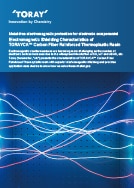- HOME
- Technical Information
- TORAYCA™ Carbon Fiber Reinforced Thermoplastic
- Electromagnetic Wave Shielding Property
Electromagnetic Wave Shielding Property
CFRTP is conductive, so molded products using this resin will have electromagnetic wave shielding property.
As shown in Figure 1, CFRTP electromagnetic wave shielding property is essentially proportional to the content of carbon fiber and varies according to the type of resin, density, moisture absorption, etc.
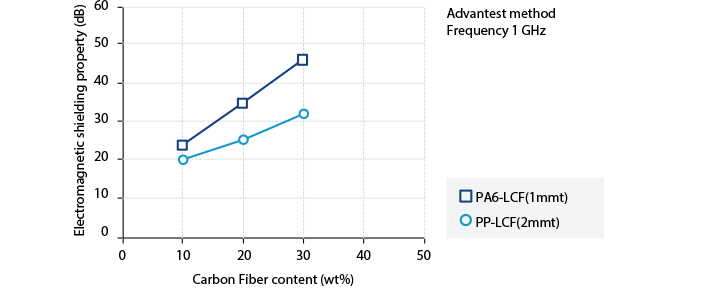
Figure 1. Correlation of Carbon Fiber Content and Electromagnetic Wave Shielding Property
The electromagnetic wave shielding property (dB) can be converted to the electromagnetic wave shielding ratio using the equation below.
As shown in Figure 2, 90% or more of electromagnetic waves can be shielded when the carbon fiber content is 10 percent by weight or more.
Electromagnetic wave shielding property (dB)= - 20 log (1 - Shielding ratio(%))
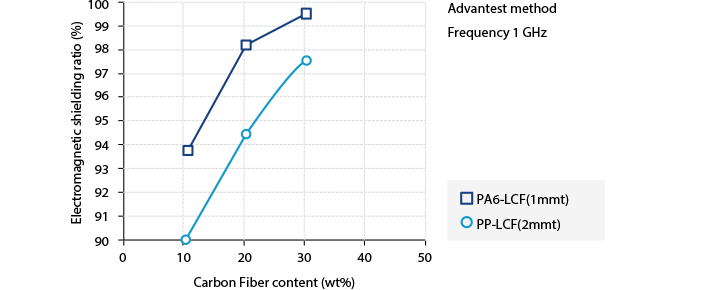
Figure 2. Correlation of Carbon Fiber Content and Electromagnetic Wave Shielding Ratio
As shown in Figure 3, the thicker the molded product, the greater CFRTP electromagnetic wave shielding property becomes.
To achieve the necessary shielding ratio, it is desirable to ensure sufficient thickness in the necessary areas of molded product to the extent permitted by design.
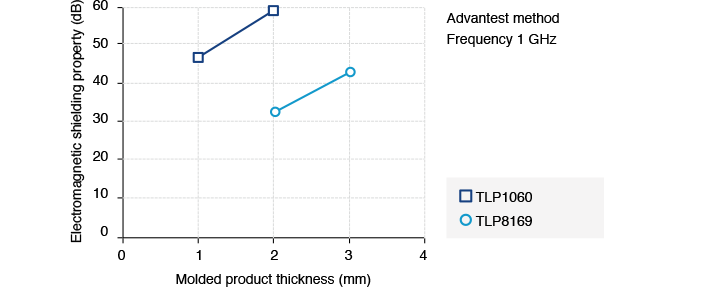
Figure 3. Correlation of CFRTP Molded Product Thickness and Electromagnetic Wave Shielding Property
As shown in Figure 4, CFRTP electromagnetic wave shielding property is dependent on the electromagnetic wave frequency, so while effective shielding is possible in the high frequency range, achieving sufficient shielding property in the low frequency range requires selecting a grade offering high conductivity. (Refer to the data sheet.)
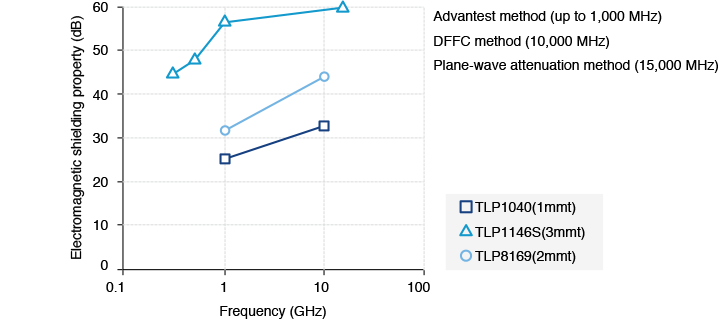
Figure 4. Frequency Dependence of CFRTP Electromagnetic Wave Shielding Property
As shown in Figure 5, CFRTP electromagnetic wave shielding property is affected by the lengths of carbon fibers in the molded product.
Some carbon fibers have long fibers whose length can be adjusted to 1 mm or longer in molded products, which is advantageous in achieving greater electromagnetic wave shielding property.
The same effects of fiber lengths are seen in different frequency ranges.
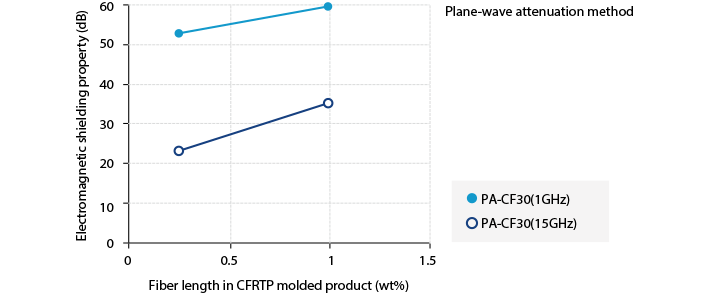
Figure 5. Effects of CFRTP Fiber Lengths in Molded Product on Electromagnetic Wave Shielding Property
As shown in Figure 6, CFRTP electric-field shielding property is greater than its magnetic-field shielding property.
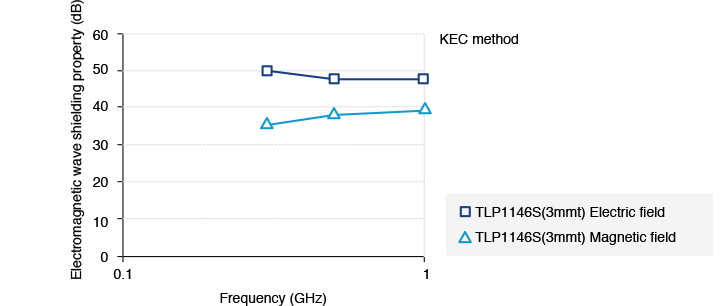
Figure 6. CFRTP Electric-field and Magnetic-field Shielding Properties
Having electromagnetic wave shielding property, CFRTP can be used to replace Al, Mg and other metal casing materials. Since the electromagnetic wave shielding property is affected by the type of resin, content of carbon fiber, thickness of molded product and carbon fiber length in molded product, among others, we help you select the grade best suited to your requirements and provide technical services to guide you on which molding method to use and how the molds should be designed.
As shown in Figure 7, CFRTP electromagnetic wave shielding property is evaluated by measuring the intensity of received electromagnetic waves E2 relative to the intensity of electromagnetic waves E1 sent from the transmitting probe.
As for the measurement method, the Advantest method, KEC method, DFFC method or other appropriate method is selected according to the electric field, magnetic field and frequency range.
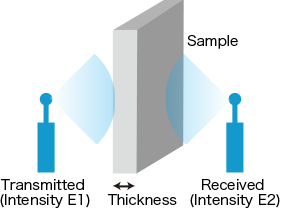
Figure 7. Image of How Electromagnetic Wave Shielding Property Is Measured
CFRTP electromagnetic wave shielding property is based on the carbon fiber conductivity and materials are not designed for the purpose of shielding electromagnetic waves.
This is merely a concomitant feature achieved by spatially isolating the source of electromagnetic waves and the object to be guarded against electromagnetic waves using the carbon fiber.
The principle mechanism behind CFRTP electromagnetic wave shielding property is energy attenuation due to combination of [1] reflectance loss of electromagnetic waves and [2] absorption loss of electromagnetic waves, where [1] reflectance loss is the dominant factor of energy attenuation.
As they pass through CFRTP, some electromagnetic waves generate Joule heat as a result of eddy current generated by electromagnetic induction, and are lost. This heat is negligible in quantity, and since CFRTP molded product has good heat dissipation property, it is never observed as a rise in the temperature of molded product.
CFRTP electromagnetic wave shielding property is dependent on carbon fiber conductivity, and sufficient characteristics may not be achieved if the molded product has low density because of an insufficient fill ratio during the molding process, if CFRTP are broken excessively in the molded product due to variation in the screw speed, screw compression ratio, resin temperature, spool taper, runner length/diameter, gate shape/diameter, thickness in cavity, etc., or if the concentration of CFRTP is low because the molded product has very thin areas that prevented the resin from flowing in.
The electromagnetic wave shielding properties of CFRTP are not affected much by the actions of general environmental factors such as light, heat and water, as these factors do not change the environment around the carbon fibers.
However, the electromagnetic wave shielding properties of molded products may change over time depending on the environment in which they are used.
For example, the resin may deteriorate over time and eventually lose its shape, decrease in density or cause carbon fiber separation, in which case the molded product can no longer maintain conductivity and its electromagnetic wave shielding property may drop.
White paper
Metal-free electromagnetic protection for electronic components!Electromagnetic Shielding Characteristics of TORAYCA™ Carbon Fiber Reinforced Thermoplastic Resin
Electromagnetic countermeasures are becoming more challenging as the number of electronic devices increases due to the widespread introduction of 5G, IoT and ADAS, etc. Toray presents the characteristics of TORAYCA™ Carbon Fiber Reinforced Thermoplastic resin with superior electromagnetic shielding and provides application case studies to show how we solve these challenges.
